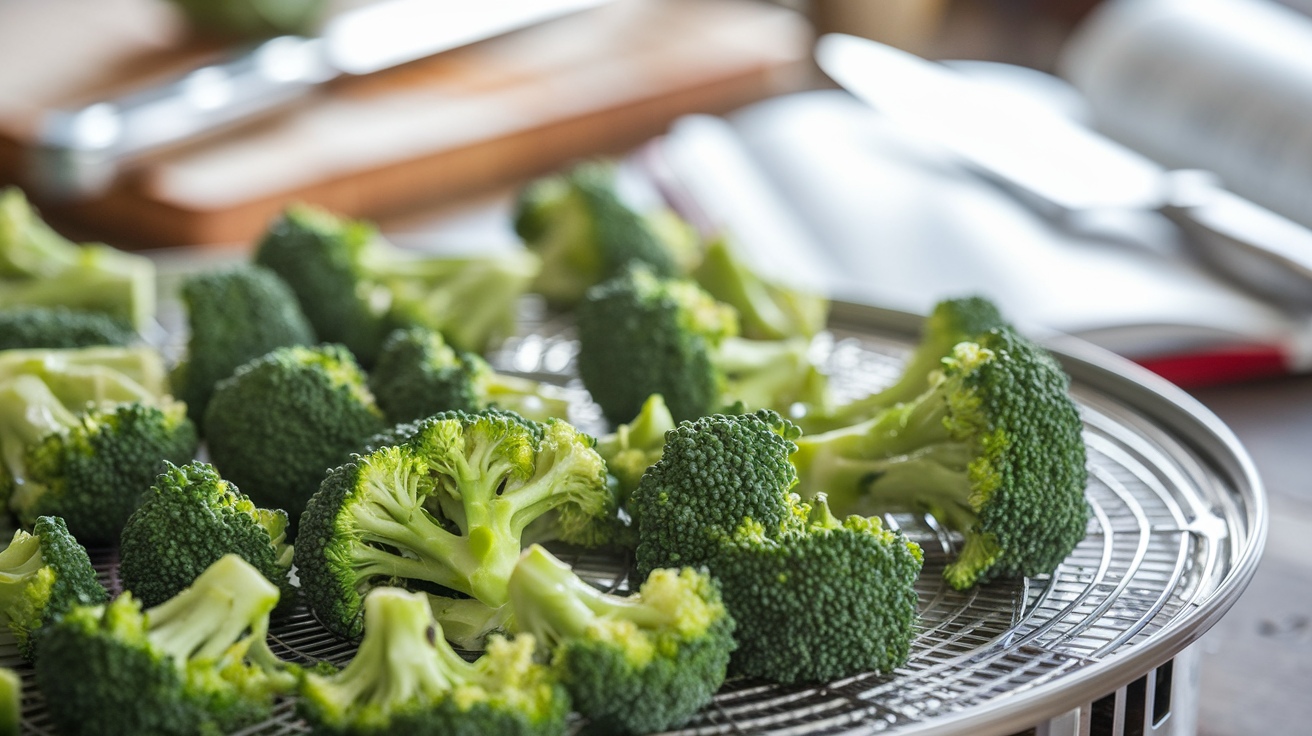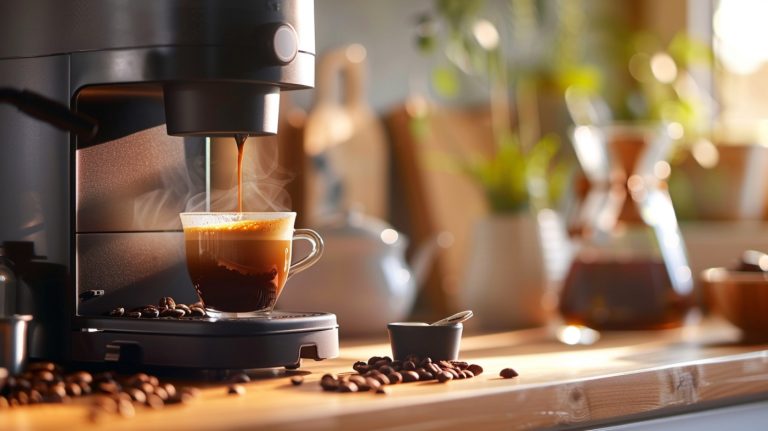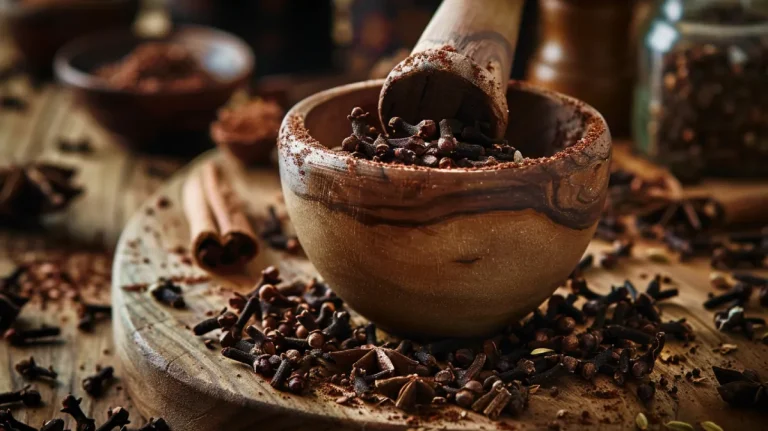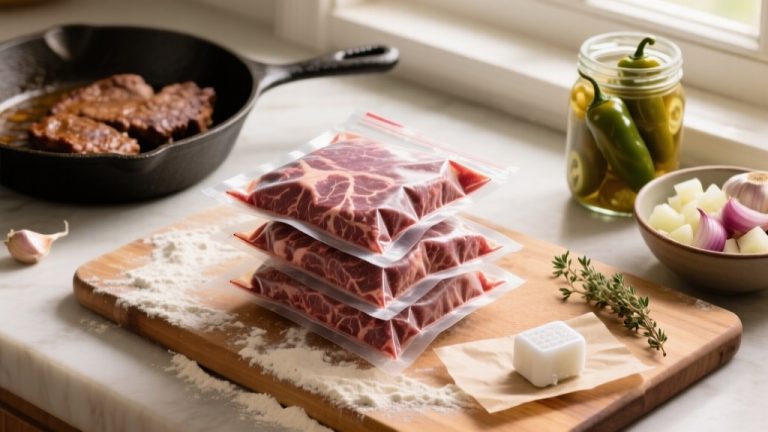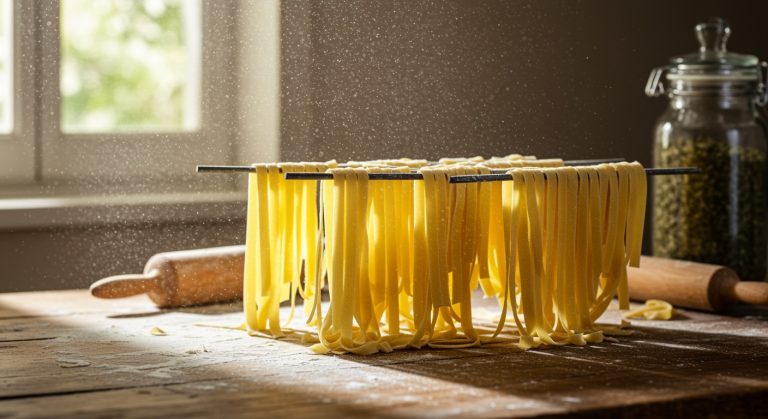Can You Dehydrate Broccoli? Everything You Need to Know
Yes, you can dehydrate broccoli. Start by selecting fresh, lower moisture varieties and blanching them to preserve color and nutrients.
Use a high-quality dehydrator set between 125°F and 160°F for 6 to 8 hours, ensuring even drying. Once done, store dehydrated broccoli in airtight containers in a cool, dark place to maintain quality.
It’s versatile in many dishes, and knowing the best techniques can enhance your results even further. Discover more efficient methods and applications for dehydrated broccoli.
Key Takeaways
- Yes, broccoli can be dehydrated, preserving its nutrients and vibrant color through proper preparation and blanching.
- Use smaller floret varieties for quicker drying and ensure uniform piece sizes for even dehydration.
- Blanching helps halt enzyme activity, improves texture, and reduces nutrient loss during dehydration.
- Dehydrate at temperatures between 125°F and 160°F for 6 to 8 hours until brittle.
- Store dehydrated broccoli in airtight containers in a cool, dark place to maintain quality and prevent spoilage.
Selecting the Right Broccoli for Dehydration
When selecting the right broccoli for dehydration, it’s crucial to take into account factors such as variety, harvest timing, and structure.
Choose varieties with smaller florets for quicker dehydration, like ‘Packman’ or ‘Signal’, which mature in about 50 days. Balanced options like ‘Di Cicco’ and ‘Belstar’ provide efficient harvesting alongside easy handling.
Dehydrating prolongs shelf life and preserves taste and texture, making it an excellent choice for long-term storage. Additionally, selecting broccoli with lower moisture content can significantly reduce drying time and improve the final texture.
Dense florets, such as those in ‘Calabrese’, may require more time, while thicker stems, like in Romanesco, can complicate preparation.
Consider the moisture content and climate conditions, as fresh broccoli with higher moisture needs longer to dehydrate.
The Importance of Blanching
Selecting the right broccoli is just the beginning of a successful dehydration process; how you prepare it plays a significant role too.
Blanching is essential for preserving quality and extending shelf life. It halts enzyme activity, retains vibrant color, and improves texture, making rehydration easier.
Additionally, blanching softens tough fibers, which aids in faster dehydrating and enhances the overall texture of the final product.
| Benefit | Description |
|---|---|
| Enzyme Inhibition | Stops deterioration processes |
| Nutrient Protection | Minimizes nutrient loss |
| Microbial Reduction | Reduces surface contaminants |
Blanching Process Explained
Begin by cleaning and trimming the florets, then cut them into uniform pieces for even cooking. Boil the broccoli in salted water for 2 to 5 minutes, adjusting the time based on your desired crispiness. Additionally, blanching is recommended for optimal flavor and texture retention.
Immediately plunge the boiled broccoli into an ice bath to halt the cooking process. This step preserves the vibrant green color and reduces the bitter taste, enhancing overall flavor.
Blanching also helps maintain texture, guarantees nutrient retention, and promotes even drying in the dehydrator.
Dehydrator Settings for Broccoli
After completing the blanching process, you’re ready to set your dehydrator for ideal results. Aim for a temperature between 125°F and 160°F to effectively dehydrate your broccoli.
The process typically takes 6 to 8 hours, varying based on your dehydrator model and how you’ve prepared the broccoli.
Cut the florets into small, uniform pieces to guarantee even drying, and arrange them in a single layer on the trays to promote good air circulation. Regularly check the texture; you’re looking for a brittle finish, indicating that most moisture has been removed.
For consistent results, use a high-quality dehydrator with a thermostat and timer. Homemade dehydrated broccoli can be stored in jars, making it a convenient option for snacking and recipe enhancement.
Proper Handling and Storage Techniques
To extend the shelf life of your dehydrated broccoli, make sure to follow these key guidelines:
Airtight Container Usage
When it comes to storing dehydrated broccoli, using airtight containers is crucial for maintaining its quality and freshness.
To effectively manage your storage, follow these tips:
- Choose the Right Container: Use mason jars, Mylar bags, or vacuum-sealed bags to prevent moisture entry.
- Store in a Cool, Dry Place: Keep containers away from direct sunlight and temperature fluctuations.
- Check for Moisture: Shake containers daily to verify no moisture has developed, which can lead to mold. It’s also important to ensure that the broccoli is fully dry after the dehydration process to prevent spoilage.
- Consider Long-Term Storage: For extended shelf life, store your dehydrated broccoli in the freezer or vacuum-seal it.
Light and Moisture Control
Storing dehydrated broccoli requires careful attention to both light and moisture control to maintain its quality and nutritional value.
Since light can degrade nutrients and affect color, keep your dehydrated broccoli in a dark place, away from direct sunlight. This helps preserve its vibrant appearance and nutrient profile.
Additionally, ensure that the broccoli is properly dehydrated to prevent any potential moisture issues during storage. Overloaded dehydrators may lead to uneven drying, which can affect the quality of the dehydrated produce.
Proper dehydration considerably reduces moisture, preventing mold growth, but you need to guarantee it’s fully cooled before storage. Regularly check for any signs of moisture accumulation or mold.
For long-term storage, aim for a cool, dry location with adequate ventilation. Conditioning your stored jars by shaking them daily for a week helps confirm uniform dryness, ensuring your dehydrated broccoli remains crispy and flavorful.
Frequently Asked Questions
Can I Dehydrate Broccoli Without Blanching It First?
Imagine you’ve just harvested fresh broccoli from your garden. You’re wondering if you can dehydrate it without blanching.
While it’s possible, you mightn’t get the best results. Raw broccoli could dehydrate unevenly, leaving some tough and chewy. Plus, you risk losing nutrients and vibrant color.
If you decide to skip blanching, consider soaking the florets in cold, salted water beforehand to improve texture. However, blanching is still the recommended method for ideal quality.
What Types of Broccoli Are Best for Dehydration?
When selecting broccoli for dehydration, consider varieties like Green Magic, Eastern Crown, and Wolfman, which perform well.
Thicker-stemmed types, such as Romanesco, take longer to dehydrate, while thinner varieties dry more quickly. You can dehydrate both florets and stems, but peeling tougher stems might be necessary.
Regardless of the variety, make certain you blanch the broccoli to maintain its color and texture before the dehydration process for the best results.
How Can I Tell When Broccoli Is Fully Dehydrated?
To tell when broccoli’s fully dehydrated, check its texture—it should be brittle or crisp. Aim for a moisture content around 10% for safe storage.
You can also look for even color and absence of pliability; any soft spots indicate insufficient drying. If you break a piece, it should shatter rather than bend.
Store it in airtight containers, and remember: proper dehydration guarantees a longer shelf life and maintains nutritional value.
Is It Safe to Use a Microwave for Dehydrating Broccoli?
You can’t have your cake and eat it too when it comes to using a microwave for dehydrating broccoli. Microwaving isn’t safe for this purpose; it uses high heat and moisture, which can lead to significant nutrient loss.
Instead, using a dehydrator preserves more nutrients and prevents spoilage. If you’re looking for a reliable method, stick to dehydration for better quality and longer shelf life.
Can I Mix Broccoli With Other Vegetables During Dehydration?
Yes, you can mix broccoli with other vegetables during dehydration. Combining broccoli with carrots or peas not only enhances flavor but also boosts nutritional value.
Make sure you cut all vegetables to uniform sizes for even drying. Blanch each vegetable separately to retain color and nutrients.
This method allows for versatile use in meals, and storing the dehydrated mix in airtight containers guarantees freshness for longer periods.
Properly Dehydrated Broccoli and Get the Most Out of Your Culinary Creations
Dehydrating broccoli is not just a method of preservation; it transforms this vibrant green vegetable into a versatile ingredient. Picture the crisp, concentrated flavor that emerges from the dehydration process, ready to enhance soups, stews, or salads.
With careful selection, proper blanching, and the right storage techniques, you can enjoy the essence of fresh broccoli long after the harvest. Embrace this method and discover how dehydrated broccoli can elevate your culinary creations.

